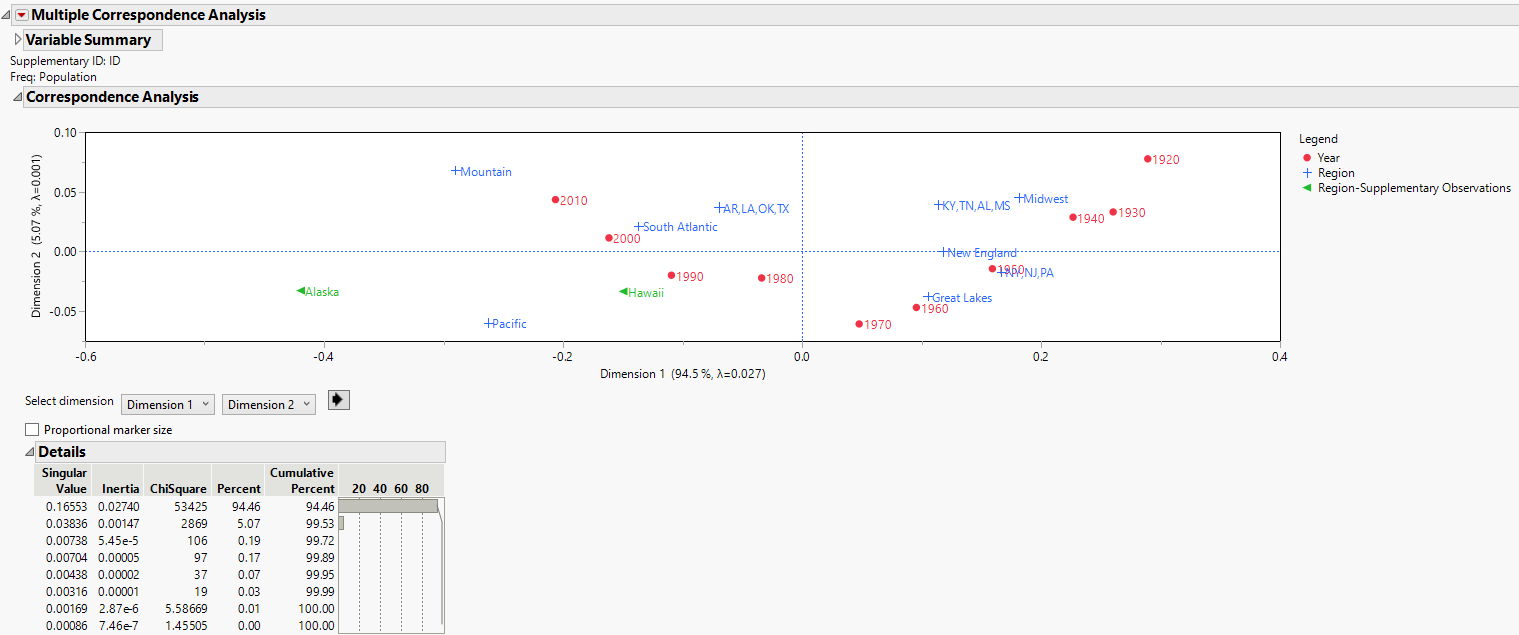Example Using a Supplementary ID
Use Multiple Correspondence Analysis to determine if the population growth in Alaska and Hawaii differs from the rest of the United States. The two states are treated as supplementary regions because they were not states during the entire time frame of data collection, and they are not part of the contiguous United States.
1. Select Help > Sample Data Folder and open US Regional Population.jmp.
2. Select Analyze > Multivariate Methods > Multiple Correspondence Analysis.
3. Select Year and click Y, Response.
4. Select Region and click X, Factor.
5. Select ID and click Supplementary ID.
6. Select Population and click Freq.
7. Click OK.
The Details report shows that the association between years and regions is almost entirely explained by the first dimension. The plot shows that years are in the correct order on the first dimension. This ordering occurs naturally through the correspondence analysis; there is no information about the order provided to the analysis. The plot highlights the isometric scale used to plot the data.
Notice that the ordering of the regions reflects the population shift from the Midwest to the Northeast to the South and finally to the Mountain and West.
Alaska and Hawaii were not used in the computation of the analysis but are plotted based on the results. Their growth pattern is most similar to the Pacific states. Alaska’s growth is even more extreme than the Pacific region.
Figure 7.7 MCA with Supplementary ID Report
